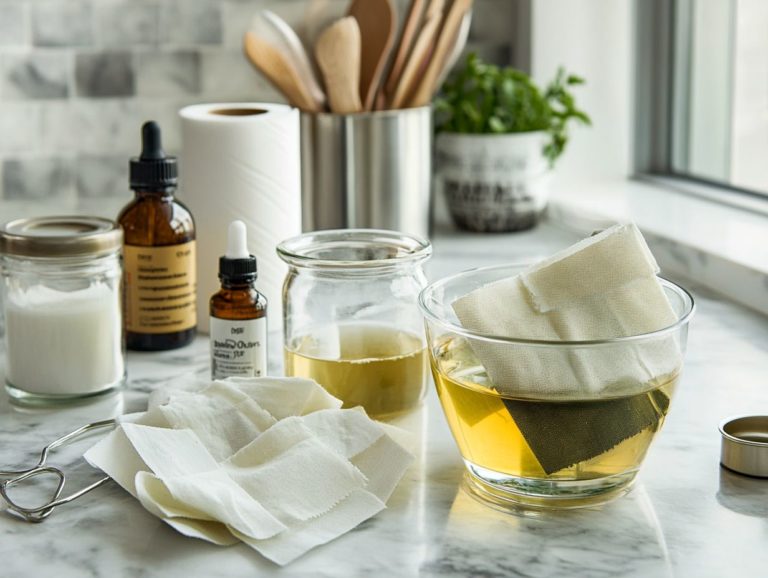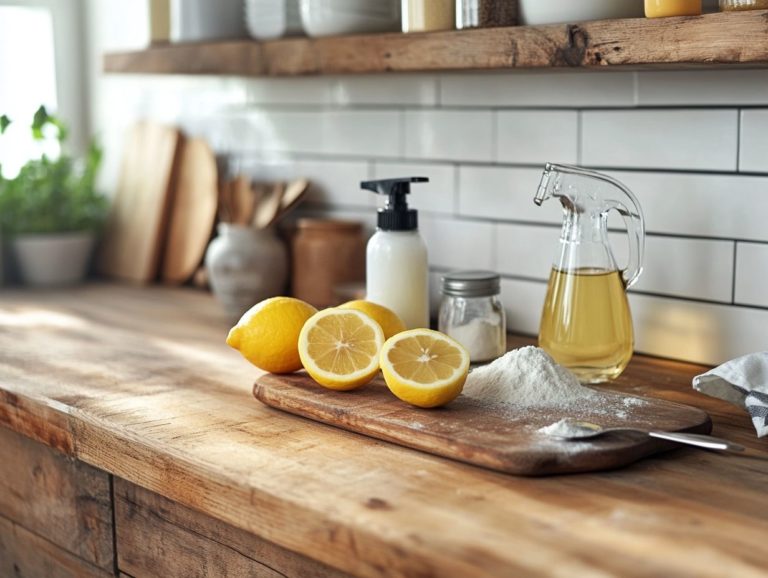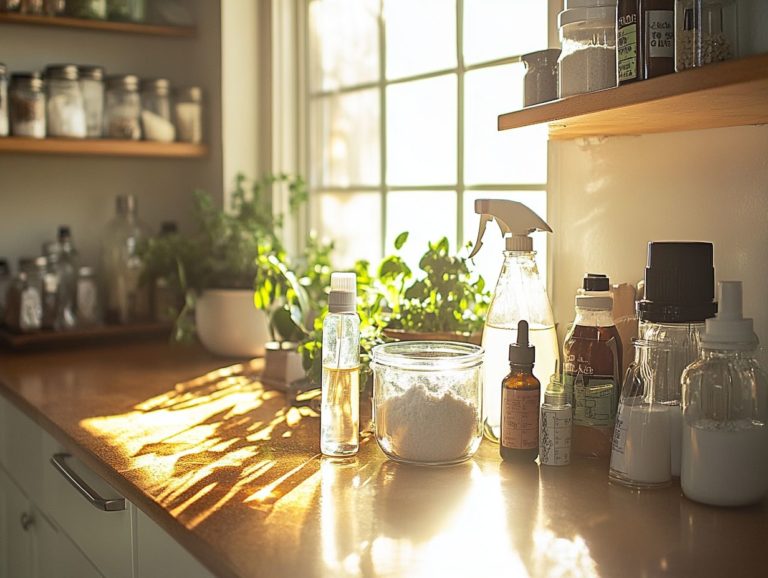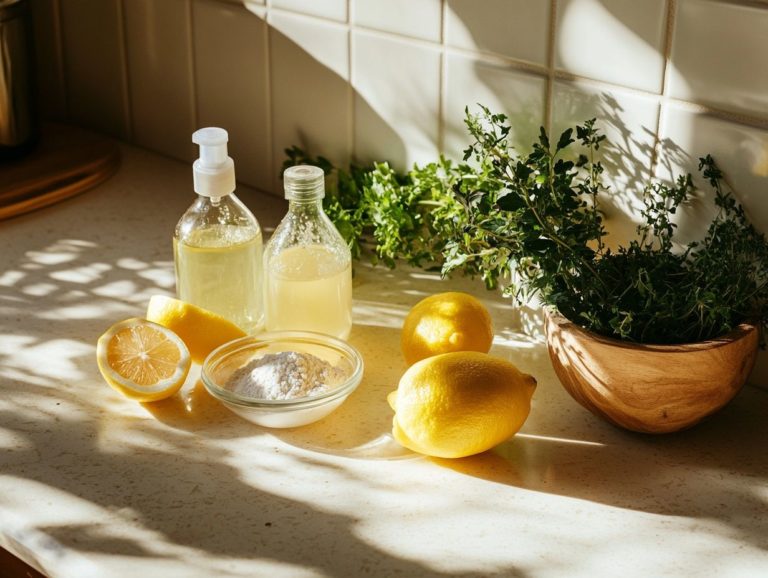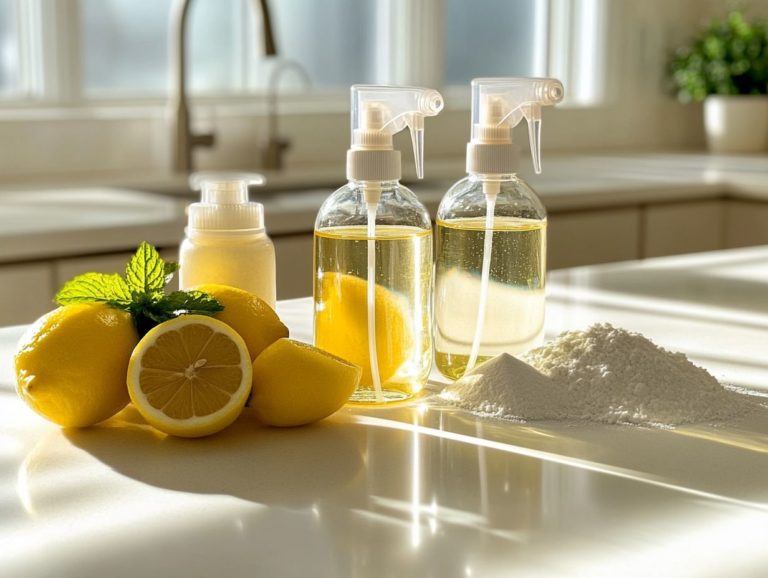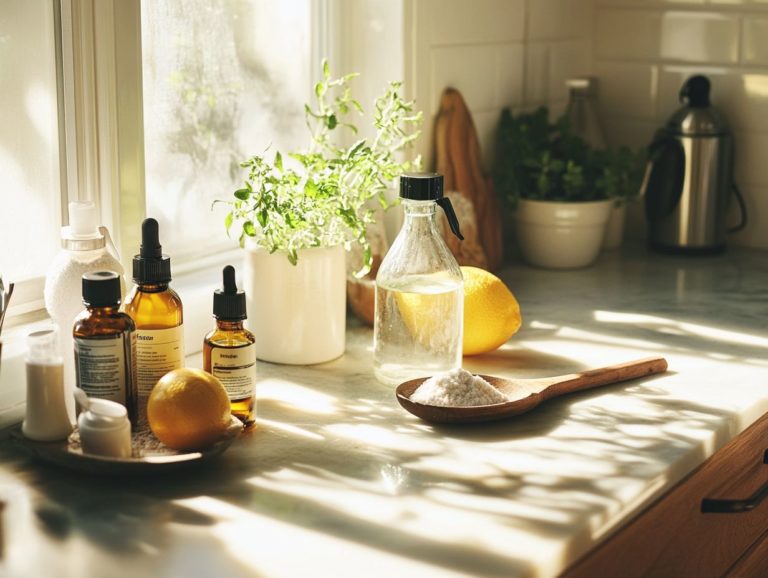How to Create a Homemade Fabric Softener
Are you weary of commercial fabric softeners laden with chemicals and artificial fragrances? Have you considered a DIY fabric softener as a more natural alternative?
Homemade fabric softener presents a natural, eco-friendly alternative that not only softens your clothes but also infuses them with a delightful scent. It’s a cost-effective solution for your laundry routine.
This guide delves into the many benefits of using homemade fabric softener, the straightforward ingredients you’ll require, and a variety of recipes tailored to your preferences. You ll discover how to use it effectively and gather handy tips for achieving the best results, ensuring an optimal wash cycle every time.
Get ready to transform your laundry routine for the better with these DIY solutions!
Contents
- Key Takeaways:
- Why Use Homemade Fabric Softener?
- What Are The Ingredients Needed To Make Homemade Fabric Softener?
- 1. White Vinegar
- 2. Baking Soda
- 3. Essential Oils
- How To Make Homemade Fabric Softener?
- How To Use Homemade Fabric Softener?
- Tips For Using Homemade Fabric Softener
- Frequently Asked Questions
- What ingredients do I need to create a homemade fabric softener?
- Can I use any type of vinegar for the fabric softener?
- What essential oils can I use for scent in my homemade fabric softener?
- How do I mix the ingredients to create the fabric softener?
- Can I use the homemade fabric softener in a washing machine?
- How much of the homemade fabric softener should I use per load?
Key Takeaways:
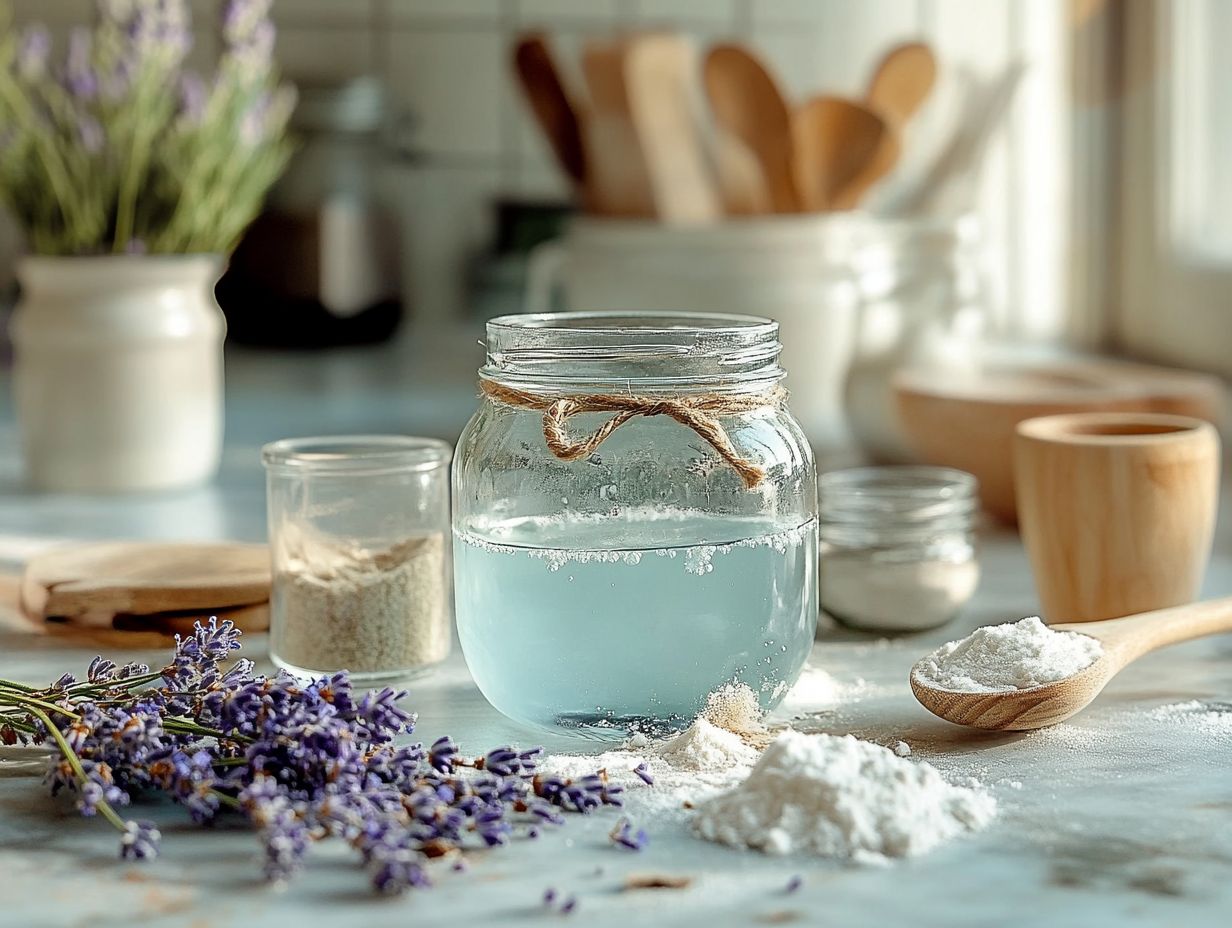
- Homemade fabric softener offers many benefits, including being eco-friendly, cost-effective, and customizable with scents of your choice. It can be made using simple ingredients like distilled white vinegar and essential oils.
- The key ingredients for making homemade fabric softener are white vinegar, baking soda, and essential oils. These are readily available and affordable. You can also use a fabric softener dispenser for easy application.
- Ready to try your homemade fabric softener? Just add it during the wash or dry cycle for amazing results!
Why Use Homemade Fabric Softener?
Opting for homemade fabric softener is a savvy decision for anyone looking to elevate their laundry experience while prioritizing both environmental consciousness and personal well-being. These DIY fabric softeners not only deliver softening capabilities that can compete with commercial brands but also bring a host of advantages.
They are budget-friendly and allow you to take charge of the ingredients, which is particularly valuable for those with sensitive skin. Choosing eco-friendly fabric softener reduces your exposure to harsh chemicals in store-bought products, making it a safer and more responsible choice for your family and the planet. These DIY solutions help avoid absorbency issues often associated with commercial softeners.
What Are The Benefits Of Homemade Fabric Softener?
Homemade fabric softeners present an array of benefits that often outshine those of conventional commercial options. These fabric softener benefits include natural cleaning properties and reduced exposure to allergens.
By choosing to create your own, you can significantly slash your household expenses, as everyday ingredients like vinegar and baking soda are far more budget-friendly than their store-bought counterparts. These eco-friendly solutions eliminate the harmful chemicals commonly found in commercial fabric softeners, offering a safer alternative for anyone with sensitive skin or allergies. Using natural ingredients helps avoid potential issues with children’s sleepwear safety.
You also have the luxury of customizing recipes to suit your unique preferences and lifestyle choices, elevating your laundry experience to new heights. This versatility grants you complete control over your choices, promoting both sustainability and comfort in your daily routines.
What Are The Ingredients Needed To Make Homemade Fabric Softener?
Crafting your own fabric softener is easy and rewarding, requiring only a few simple items. This allows you to personalize your laundry routine while saying goodbye to commercial cleaning products laden with unwanted chemicals.
Key components for your DIY fabric softener include distilled white vinegar, which serves as an effective softening agent, and Epsom salts, a type of salt that can help soften fabrics. You can also incorporate hair conditioner for added softness.
To elevate the scent of your laundry, consider incorporating essential oils, providing a delightful natural fragrance without the synthetic chemicals often found in store-bought fabric softeners.
1. White Vinegar
White vinegar, particularly distilled white vinegar, is vital in many homemade fabric softener recipes.
It has impressive softening properties and neutralizes odors in your laundry. This fabric softening liquid works well with both the vinegar method and the conditioner method.
Not only does it reduce static cling and leave your clothes feeling luxuriously soft, but its natural cleaning ability also breaks down detergent residues. This ensures a fresher wash every time.
By incorporating this versatile ingredient into your laundry routine, you can significantly enhance the overall effectiveness of your washing.
Distilled white vinegar serves as an eco-friendly alternative to commercial fabric softeners, avoiding harsh chemicals that can irritate sensitive skin. Its antibacterial qualities also contribute to a more hygienic clean, making it ideal for families who prioritize healthier options for their laundry needs.
2. Baking Soda
Baking soda is an essential ingredient in homemade fabric softeners.
It acts as a natural cleaning agent that softens fabrics and controls static electricity.
This makes it a must-have for any effective laundry routine.
This versatile compound elevates the effectiveness of your softener by neutralizing odors and balancing the acidity or alkalinity of your washing water.
It also lifts dirt and grime during the wash. When you incorporate baking soda into your fabric softener formula, it helps preserve colors and reduces the harshness of detergent residues.
This ensures your clothes feel fresher and more comfortable against your skin. Its eco-friendly nature makes it an attractive option for anyone seeking sustainable alternatives in their laundry routines.
By embracing this simple yet powerful ingredient, you can significantly enhance your fabric care while contributing to a healthier environment.
3. Essential Oils
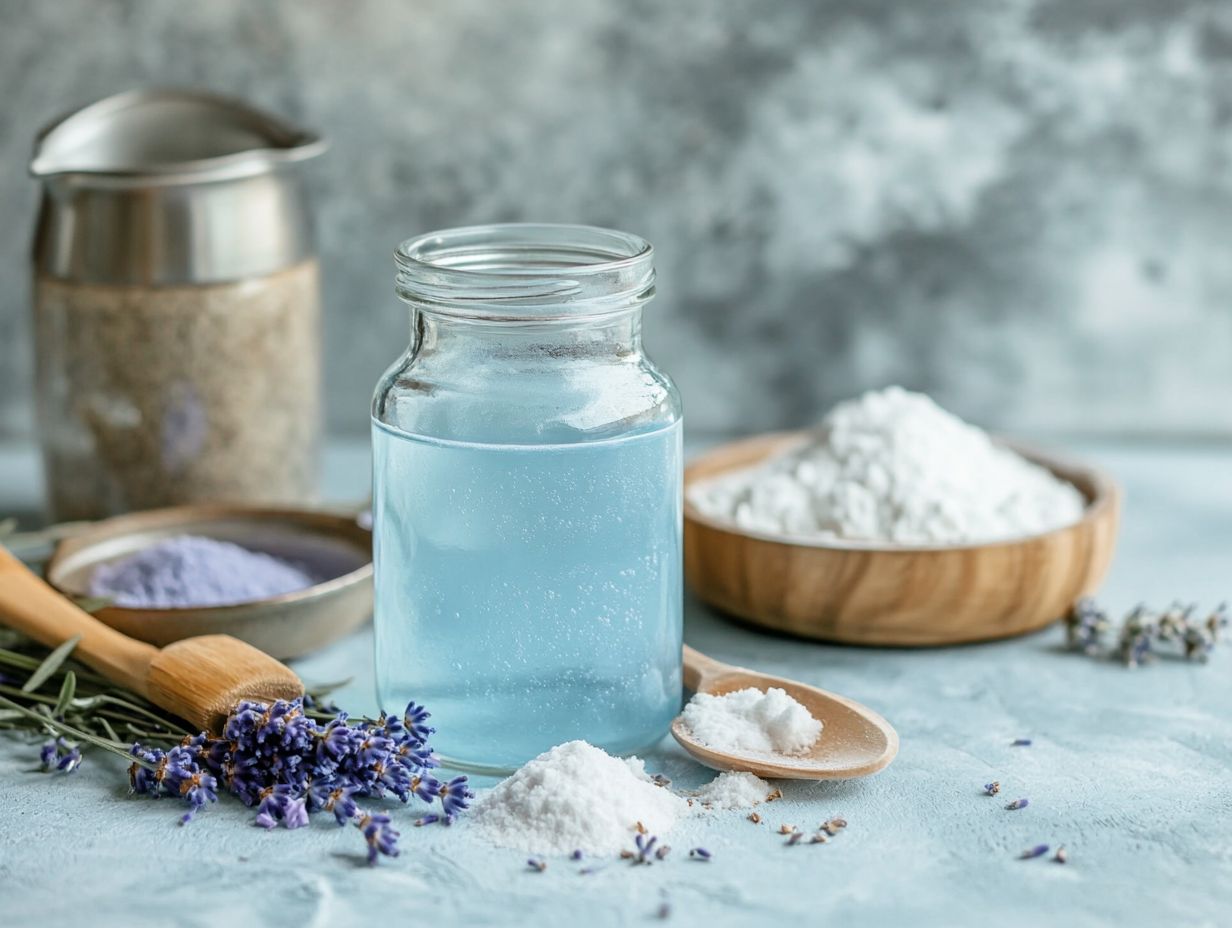
Essential oils are a delightful enhancement to your homemade fabric softeners.
They offer natural fragrances that can transform your laundry routine into a sensory delight.
By incorporating these aromatic extracts, you not only elevate the scent of your freshly laundered clothes but also gain a host of benefits, including antibacterial properties and natural odor elimination.
For example, lavender essential oil is celebrated for its calming effects, making it ideal for crafting a soothing atmosphere in your home.
On the other hand, eucalyptus oil provides a refreshing aroma that s invigorating and effective in combating musty odors.
Citrus oils, like lemon or orange, offer an uplifting scent that adds an energizing twist to your laundry.
By choosing the right essential oils, you can create a personalized fabric softener that leaves your clothes soft and fragrant while enhancing the overall laundry experience.
How To Make Homemade Fabric Softener?
Crafting your own homemade fabric softener is an easy and rewarding endeavor.
It allows you to tailor the ingredients to suit your unique preferences and laundry requirements.
With just a few straightforward steps and some basic ingredients, you can create effective and safe fabric softeners right in your kitchen.
This not only elevates your laundry experience but also saves you money and reduces your environmental footprint.
Whether you opt for the vinegar method or the conditioner method, you ll achieve the perfect balance of softness and fragrance for your laundry.
Try these recipes today and enjoy fresher laundry with a personal touch!
1. Basic Recipe
The essential recipe for crafting your own homemade fabric softener is simple. Combine distilled white vinegar and water for an effective solution that fits seamlessly into your laundry routine. Using a kitchen funnel can help transfer the mixture into a plastic storage bottle for convenient use.
To create this straightforward concoction, mix one part distilled white vinegar with three parts water. This balance enhances softness and effectively neutralizes odors. This cost-effective mix serves as a fantastic alternative to commercial fabric softeners, providing enduring freshness without the harsh chemicals often found in store-bought versions.
Just combine the ingredients in a clean spray bottle or mixing bowl. Stir well to blend, and you re ready to enjoy the benefits!
Incorporating this DIY fabric softener into your rinse cycle leaves your clothes feeling luxuriously soft and smelling delightful. This demonstrates that effective laundry care can be simple and rewarding.
2. Scented Fabric Softener
If you enjoy a fragrant touch in your laundry, crafting a scented fabric softener adds a delightful twist to the classic recipe. You can incorporate essential oils to infuse wonderful aromas into your fabrics. This DIY blend can be stored in a resealable plastic container for easy use.
By adjusting the basic mixture, you can customize the scent to match your preferences or the changing seasons. To elevate this aromatic experience, consider adding a few drops of essential oils, such as:
- Lavender: Calming effects
- Eucalyptus: Refreshing scent
- Lemon: Bright and uplifting aroma
These oils not only provide pleasing fragrances but also offer a range of benefits. Feel free to experiment with combinations, like rosemary and mint, to create a unique blend that transforms your laundry into a spa-like experience.
3. Fabric Softener Sheets
Homemade fabric softener sheets provide a delightful alternative to conventional dryer sheets. By using cotton fabric squares or wool fabric strips soaked in your preferred fabric softener solution, you can reduce static electricity and soften your clothes during the drying cycle. Secure them with rubber bands for added convenience.
This fun DIY method cuts down on waste and gives you more control over your laundry! To craft these sheets, you ll need essential items like measuring cups and a mixing bowl:
- Cotton fabric
- A mixing bowl
- White vinegar
- Your favorite essential oils or a store-bought fabric softener
Begin by cutting the fabric into 6-inch squares. Soak them in a mixture of one cup of vinegar and a few drops of essential oils for added fragrance. Once saturated, let the squares dry completely before tossing them into the dryer with your laundry. For the best results, use a couple of sheets at a time, adjusting the number based on your load size. This ensures your clothes emerge soft, static-free, and infused with a fresh, clean scent.
How To Use Homemade Fabric Softener?
Incorporating homemade fabric softener into your laundry routine can significantly elevate the cleanliness and softness of your garments. You can add it during the wash cycle or in the dryer.
It’s essential to understand the best practices for integrating these DIY solutions into your laundry process. While the application methods may differ, the ultimate goal remains the same: to enjoy soft, fresh-smelling fabrics that enhance your daily life in no time!
1. In The Washing Machine
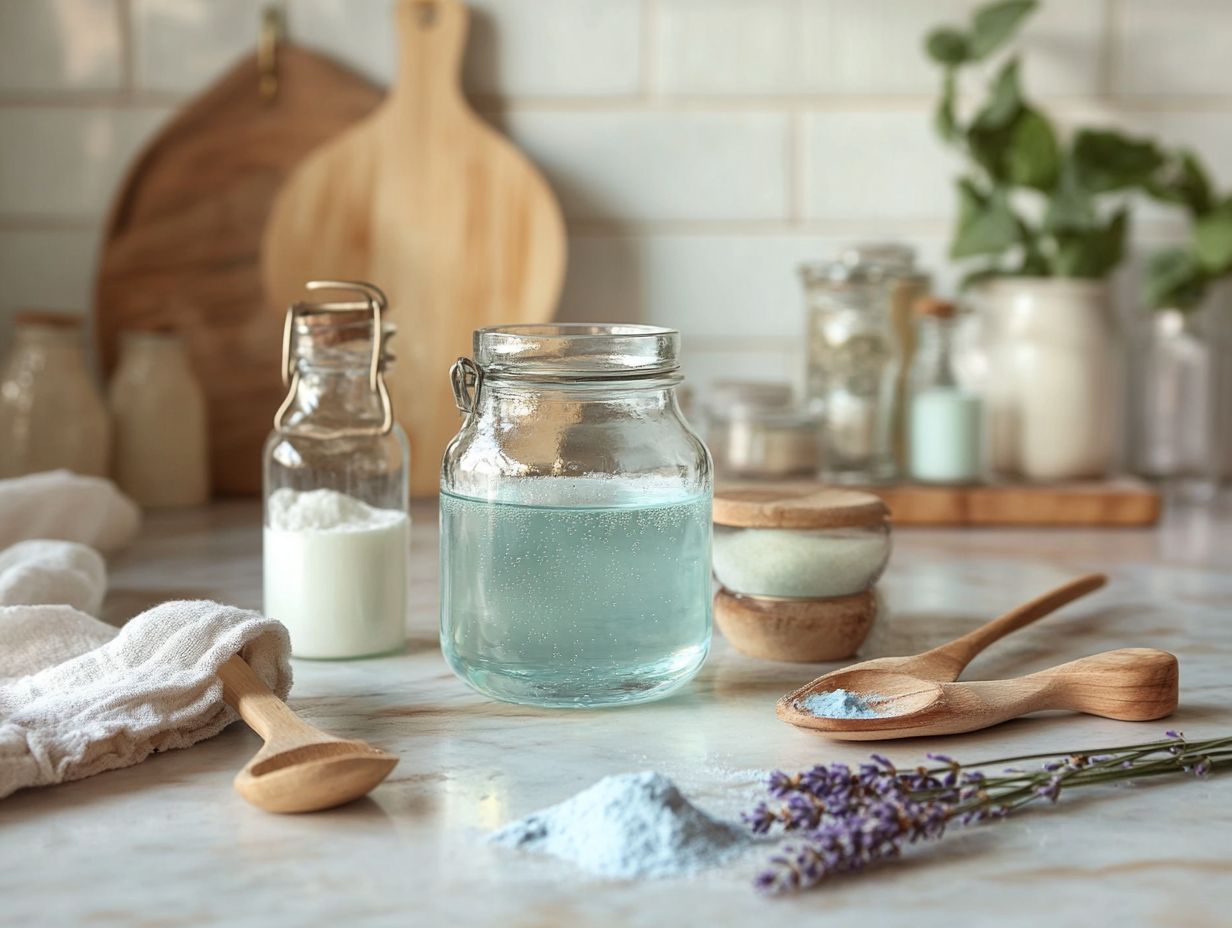
To incorporate homemade fabric softener into your washing machine, simply add the right amount to the fabric softener dispenser or pour it directly into the wash cycle for optimal distribution.
For the best results, it s essential to measure the appropriate quantity, typically around 1/2 to 1 cup, depending on the size of your load. Timing is crucial when adding it directly into the wash cycle; you ll want to do this during the rinse phase. This timing prevents the softener from being washed away in the initial wash, ensuring it effectively coats your fabrics to enhance softness and minimize static cling.
If you’re using a top-loading machine, pour the mixture into the water before adding your clothes to ensure even distribution. Different fabrics may require slight adjustments in the amount you use, so don t hesitate to experiment for the best results.
2. In The Dryer
When you opt for homemade dryer sheets or alternatives like wool dryer balls, toss them into the dryer with your laundry. This simple act helps reduce static electricity and enhances the softness of your fabrics.
These natural choices not only bring a delightful fresh scent but also improve drying efficiency by allowing air to circulate better among your clothes. If you’re inclined towards DIY solutions, you can easily create homemade dryer sheets by soaking cotton fabric or old t-shirts in a mixture of vinegar and essential oils. Just cut them into squares, store them in a jar, and you’ll have a convenient supply ready for future use.
Wool dryer balls, crafted from natural wool, can endure up to 1,000 loads, soaking up moisture and ultimately decreasing drying time. To get the most out of them, consider using three to six balls for larger loads. Always check care labels to ensure compatibility with your fabrics, and for an added touch of fragrance, feel free to add a few drops of essential oil to the dryer ball before each use.
Tips For Using Homemade Fabric Softener
To maximize the effectiveness of your homemade fabric softener, consider a few essential tips and best practices that will elevate your laundry experience. From crafting the solution to applying it correctly in each load, these insights will help you achieve optimal results while reaping the benefits of your DIY fabric softener’s natural cleaning properties.
Proper storage and application are key to maintaining its effectiveness and extending the lifespan of your homemade concoction.
1. Shake Before Use
It’s crucial for you to shake your homemade fabric softener before each use! Doing so allows for an even distribution of the ingredients, ensuring that the fabric softening liquid works effectively on your laundry.
Natural ingredients can separate over time, so shaking is especially important. If you skip this simple act of shaking, you risk ending up with a bottle that delivers uneven softness some fabrics may feel rough, while others might enjoy the full benefits of the softener.
A well-mixed fabric softener ensures better coverage on your clothes, enhancing the fragrance and effectively keeping static cling at bay. Therefore, embracing this straightforward precaution can significantly elevate your laundry experience, making it entirely worth your effort.
2. Use Appropriate Amount
Using just the right amount of homemade fabric softener is essential for achieving optimal results. If you use too little, your fabrics may not soften effectively, while using too much can lead to unsightly residue buildup.
Finding that perfect balance is crucial, especially since different fabrics absorb solutions in their own unique ways. For instance, heavier materials like towels and denim typically benefit from a more generous dose around a quarter cup is usually ideal, as these fabrics tend to hold onto moisture quite well. On the other hand, lighter fabrics, such as t-shirts or delicate garments, might only need an eighth cup to avoid the risk of overwashing.
When you’re tackling larger loads, consider slightly increasing the quantity to ensure an even distribution and maximum softness. Being mindful of these measurements elevates the feel of your laundry and extends the lifespan of your clothes, allowing you to enjoy them for longer.
Try making your own fabric softener today and see the difference it makes in your laundry!
3. Store Properly
Proper storage of your homemade fabric softener is essential for maintaining its quality over time. You ll want to use a plastic storage bottle or a resealable plastic container to keep it sealed and protected from any contaminants.
It’s crucial to store the fabric softener in a cool, dry place, away from direct sunlight. Excessive heat and light can degrade its quality, and nobody wants that. Opting for opaque containers provides added protection against light exposure.
Be sure to seal the lids tightly to prevent any evaporation or moisture absorption, which could compromise the texture and scent of your softener.
By keeping these storage conditions in mind, you ll ensure that your fabric softener remains effective through multiple uses. Imagine your laundry feeling luxuriously soft!
Frequently Asked Questions
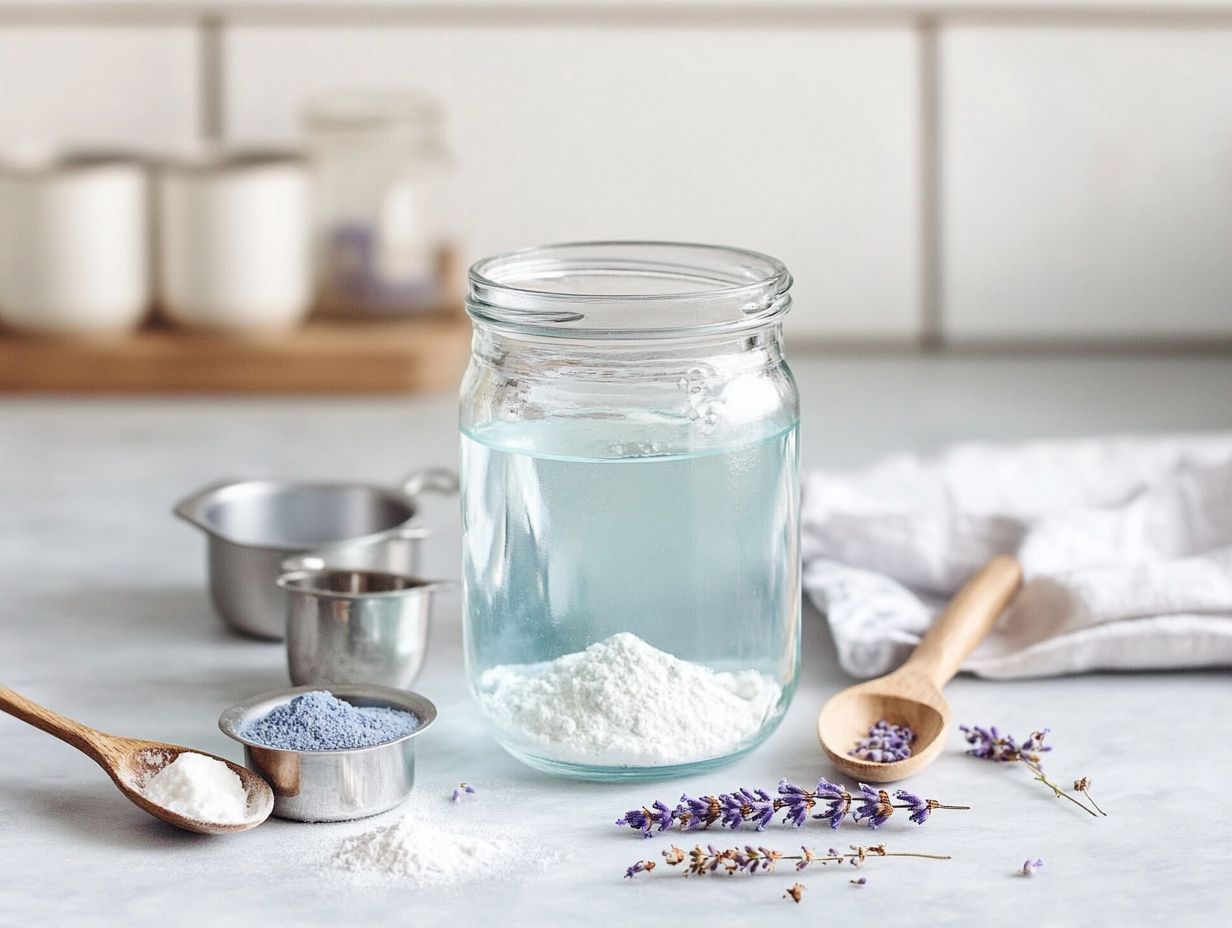
What ingredients do I need to create a homemade fabric softener?
To create a homemade fabric softener, you will need white vinegar, baking soda, essential oils, and distilled water, which is water that has been purified through boiling.
Can I use any type of vinegar for the fabric softener?
Yes, you can use any type of vinegar, but white vinegar is recommended as it is the best for softening fabrics and removing build-up.
What essential oils can I use for scent in my homemade fabric softener?
You can use any essential oils of your choice, such as lavender, peppermint, or lemon, to add a pleasant scent to your fabric softener.
How do I mix the ingredients to create the fabric softener?
Mix 2 cups of white vinegar, 2 cups of distilled water, and 10-20 drops of essential oils in a large bowl. Slowly add in cup of baking soda while stirring until it dissolves.
Can I use the homemade fabric softener in a washing machine?
Yes, the fabric softener can be used in both top-loading and front-loading washing machines. Simply add it to the designated fabric softener compartment or during the rinse cycle.
How much of the homemade fabric softener should I use per load?
For a standard load of laundry, use cup of the homemade fabric softener. Adjust as needed for larger or smaller loads.
Start making your fabric softener today and experience the difference!

